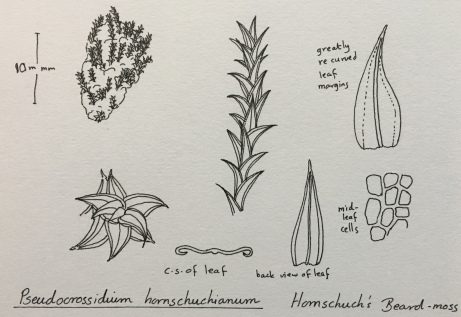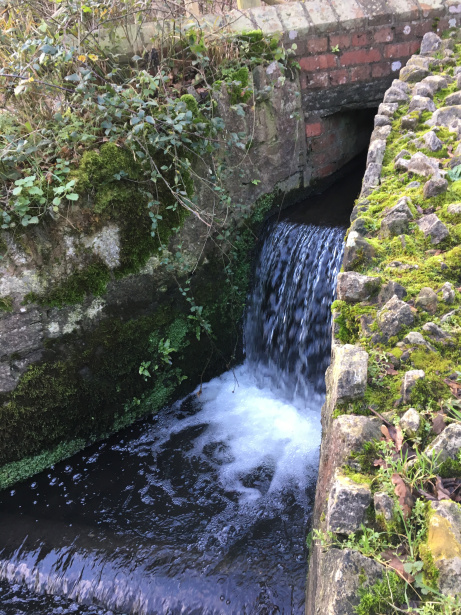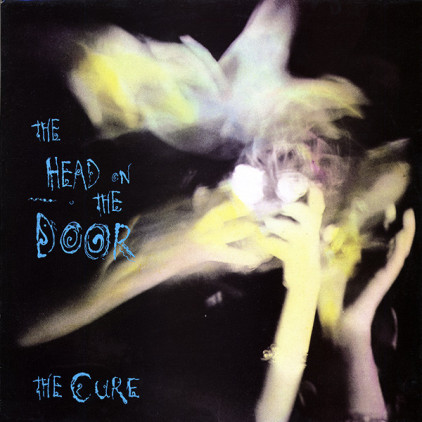Apart from Holywell, home to some rare and interesting bryophytes, the Eastbourne area is quite poorly recorded. While perusing OS maps I noticed that Hampden Park, to the North of the town centre, straddled four tetrads and thought that surveying the area would be an enjoyable and relatively painless way to boost the records and get 2018 off to a good start. After a week of stormy weather I was itching to get out and as soon as a downpour stopped on Friday morning I hopped on a train with just enough time to pick up a cheese croissant at Brighton station but no time to check previous records. It was going to be a push to record all four tetrads on a short winters day after a late start so I vowed to be more prepared on any return visit. Outside the train window a hazy sun shone on The Downs and I wondered why I had chosen to visit city woodland!
The park is just a short walk from the station and I picked up a few mosses of tarmac and grass verges on the way. The first area, in TQ60A looked quite exciting as the raised, gravel walkway snaked through flooded ground with epiphyte covered trees collapsing into the swamp. I always thought Eastbourne was called the Florida of the South coast because of its ageing population, not because of its wetlands; and I hadn’t thought to wear wellies! Luckily there weren’t any alligators and the trees were covered in fruiting Rhynchostegium confertum and Hypnum cupressiforme with patches of Cryphaea heteromalla and Metzgeria furcata. A majestic Oak tree had a pale patch of Neckera complanata and a small areas of Zygodon growing in crevices in the bark. I checked the gemmae of the latter on my return home and they were grenade shaped with vertical cell divisions so it was Zygodon viridissimus var. viridissimus. I then noticed that some of the leaves had a strong, excurrent nerve so the much rarer Zygodon viridissimus var. stirtonii was mixed up with the Z viridissimus. Zygodons were very scattered on trees throughout the park but all the other samples I collected were Z. viridissimus var. viridissimus.
Amblystegium serpens was covering the wooden edge to the walkway which led me to the South edge of the wood and a ditch surrounding football pitches. I hadn’t been here for over 15 years, since my daughter played for Brighton and Hove Albion under 11’s! A patch of Thamnobryum alopecurum on a tree base had a few capsules and the common mosses Brachythecium rutabulum and Kindbergia praelonga were also covered in capsules. The latter two mosses were abundant in the wood but only fruiting in this spot which was damp from the stream and warmed by the sun.
After an hour of paddling around in the woods I realised that I hadn’t been recording in Hampden Park proper so followed signs to the cafe and found the central pond. I recorded some species on damp gravel and a bit of Pseudocrossidium hornschuchianum on a wooden fence before starting on the next tetrad, TQ50V, the cafe conveniently situated at the edge. After an overpriced and under caffeinated coffee I started on the large parkland trees around the pond. Each seemed to have their own distinctive bryophyte flora. Bryum capillare covered the base of a large Ash and another had Syntrichia laevipila scattered on its trunk. Cololejeunea minutissima was quite common on a Sycamore and another Ash tree was covered in Syntrichia papillosa. I didn’t see this distinctive moss with gemmae enclosed in the leaves on any other trees.
The next place that looked interesting was a small stone bridge and waterfall lined with concrete. It was covered in a rich mix of common species. Lunularia cruciata covered vertical concrete and was much bigger than usual. The chalk stream looked clear but the presence of this liverwort suggests some pollution. Homalothecium sericeum was the main moss on the stone top of the bridge and Rhynchostegiella tenella coated the outer sides of the bridge and was fruiting, the brown setae looking orange in the sun.

The bridge and waterfall
The next stop was a huge fallen tree trunk which had Campylopus introflexus and Dicranoweissia cirrata as well as much Hypnum cupressiforme growing along the cracks in the wood. A bit of damp woodland behind the log yielded more epiphytes but only Isothecium myosuroides was new for the day and it was on the base of just one Oak tree.
The light was beginning to fade by now so I headed back in the direction of the station and made a detour down a suburban street in TQ60B, which was fairly rich in pavement bryophytes. The thallose liverwort, Marchantia polymorpha subsp. ruderalis, was the most vigorous here and its little umbrella shaped female receptacles fringed the base of a garden wall.
Back at the station a tiny patch of moss caught my eye as I watched my train approach. There was plenty of Tortula truncata with empty capsules looking like little wooden egg cups but some of the leaves looked too big and lax. Looking at it more closely when I got home I realised it was nearly all T. truncata and I think the leaves just looked big and floppy to me (all of 2mm long) after recently looking at so much Microbryum, with its tiny stiff leaves. There was some Bryum rubens with plenty of red tubers though.
At the end of the day the moss count for TQ60A was 36, TQ50V was 37 and TQ60B was just 17 but I had only really looked at pavements in this tetrad. There is an old record for Lophocolea in the woods and I did detect a whiff of it near the waterfall but failed to find the plant. I couldn’t record it though I am sure it is there. The wet conditions were great for spotting epiphytes and mosses of tarmac and gravel but I would like to come back at a drier time and get further into the swamp.
Advertisements Share this:




